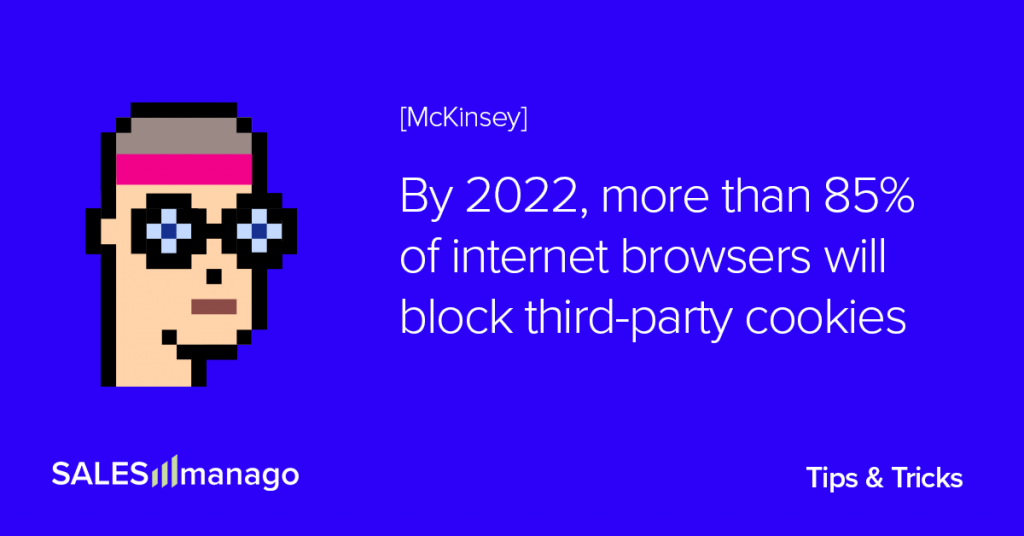
Collecting zero-party data is not that hard, once you have a good idea and proper tools to execute it. The necessity of building a zero-party data collection strategy may be closer than you think. Here are 7 tricks to boost data collection in a cookieless world.
The shift away from third-party cookies is becoming a reality.
Companies that won’t accept the new reality will be at a loss. Already, many publishers are looking for a way to make the transition to more consensual and ethical data sources relatively painless.
- The publishing industry will have to replace up to $10 billion in ad revenue with a combination of first-party data and updated contextual targeting and probabilistic audience modeling. (McKinsey)
That’s all fine and dandy, but there’s a particular type of data that will make your contact’s profiles, and therefore your marketing, more effective: zero-party data.
What’s more, consumers themselves want personalization. However, it must be balanced.
- Stunning 91% of consumers are more likely to shop with brands who recognize, remember, and provide relevant offers and recommendations. (Accenture)
- While 41% of consumers think that text from a brand or retailer when walking by a store is creepy, 45% of people finds other personalized action (receiving an apology email after a poor in-store or online experience) rather cool and endearing. (Accenture)
It is the use of zero-party data that leads to the humanization of the customer experience in the digital world. And that’s what customers like. They are willing to trade information about themselves and their preferences for it.
- Whopping 74% of respondents said they would find “living profiles” valuable if they could be used to curate the experiences, offers, and products they receive. (Accenture)
How can you boost data collection?
Personalize your website
First of all, use first-party data to collect zero-party data. Collect everything you know about your contacts based on their behavior. Show them that you notice them and pay attention to what they do and tailor your actions to their preferences.
Use this knowledge to customize the banners and pop-ups you display and ask users to provide data in exchange for rewards that appeal to them.
Use Web Push channel
Gain a new channel of communication with anonymous users. Collect opt-in consents via forms to send notifications.
The next step will be to prepare and launch a targeted campaign to get contact information and opt-in consents for other channels!
Ask directly
Open communication with your audience will also work well for collecting first-party data. If you want to know something about them, such as how often they want to receive messages from you and what topics they want to read about, ask them via email. By sending a campaign with a survey, you’ll give them the opportunity to provide feedback and let you know their preferences. The data obtained this way will allow you to segment your audience by many attributes and personalize the messages you send.
Use progressive forms
Not many people are ready to give you a bunch of information about themselves at the first meeting. That’s why it’s a good idea to gather information slowly, starting with the bare essentials for basic marketing activities. More data will come with time, especially if you are committed to building relationships and gaining the trust of your audience. Progressive forms are a good way to gradually collect data about your contacts. Don’t worry about it taking a little longer. The time will pass anyway, and the trust built is priceless and pays off in the future.
Ask for rating
Customer satisfaction surveys are the bloodstream of business development. Ask your customers to rate the quality of your services and products. Find the satisfied customers who can be stimulated to further conversions and those who need extra care. And who knows? Maybe you will get ready ideas for real improvement of your business.
Use Website Automation Rules
What about users who are still anonymous, for example they are on your site for the first time? You can use the Website Marketing Automation feature. It uses triggers based on user behaviour to obtain data at the best moment for this purpose. This will still be data that is voluntarily and knowingly submitted. You can use these mechanisms to convert anonymous users into identified ones.
Swap
Do you have valuable articles on your site? Make good use of them! The knowledge shared by experts is quite a treat for those interested in the topic. Practical guides, instructions, recipes… You can make them all attractive and exchange for recipients’ data. Ask users to leave their contact details and in return provide access to valuable knowledge!
A few words about data collection to sum up
“Customers have stated that they would be more willing to trust companies that gave control over the collected information, are transparent in the way they use that information, have a strong privacy policy or ask for explicit consent.” (Data Privacy Manager)
When collecting data, always consider the feelings and needs of your users. The information once entrusted to you does not suddenly become public property that you can use for any purpose. Do not exceed given consents. Once trust is lost, it is difficult to regain, just like reputation on the market. Fortunately, this also works the other way around, and a firmly established reputation for trustworthiness will spread far and wide and bring you more business.
If you want to learn more about ethical data sourcing, contact your account manager and tell them about your needs.
 Follow
Follow
















